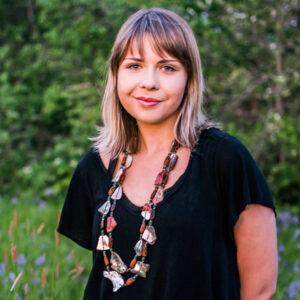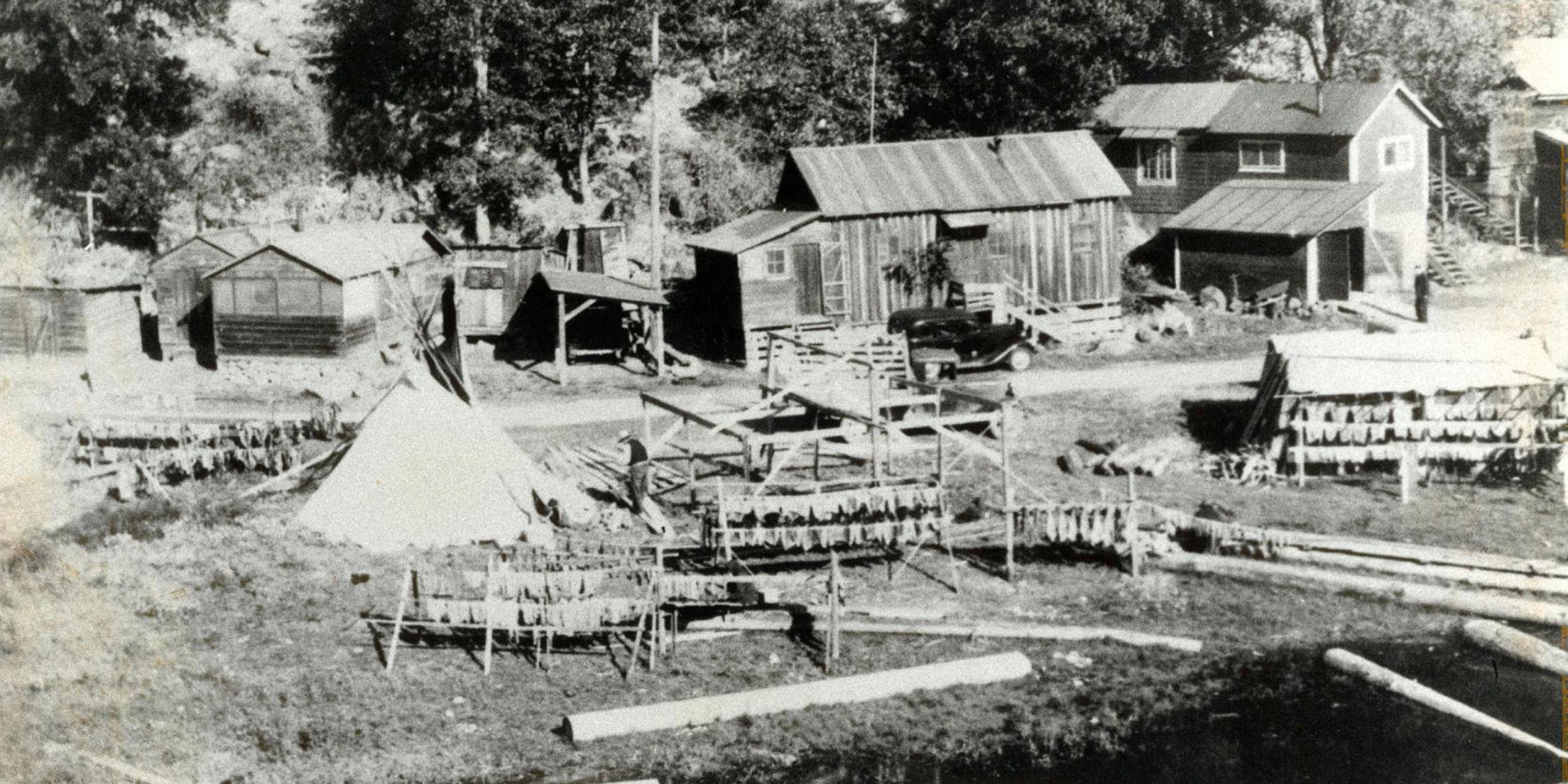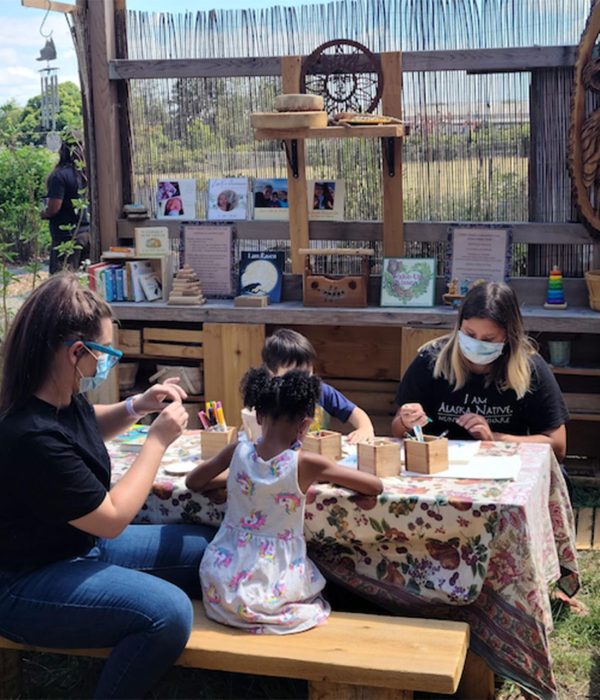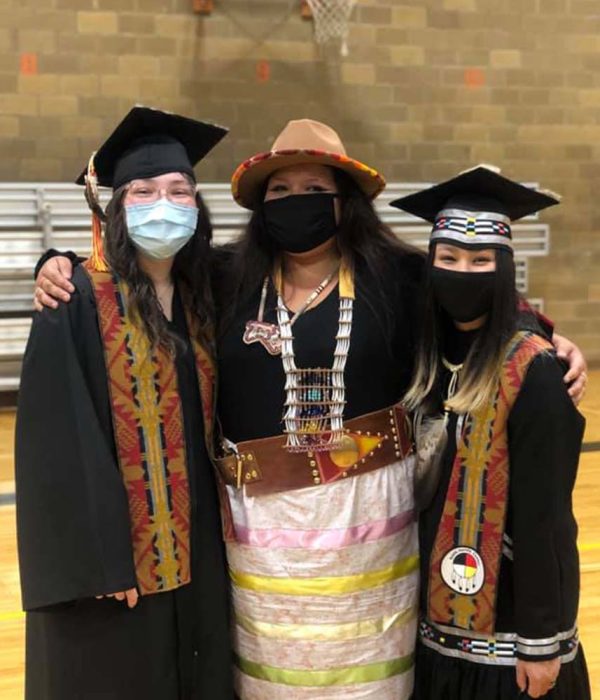
Indigenous Storytelling and Engagement Fellow
Paul Lumley during the 2022 Indigenous Leadership Awards. Photo credit: Kari Rowe
Paul Lumley (Yakama) is an honored recipient of the 2022 Ecotrust Indigenous Leadership Awards for his visionary leadership to address issues, which include but are not limited to, tribal treaty rights, environmental protection and restoration, housing, defense, education, and social services, directly impacting Native American, Alaska Native, and Native Hawaiian communities.
As an Indigenous leader, Paul’s career has taken him to top federal agencies such as the U.S. Department of Defense and the National American Indian Housing Council. He is the current Chief Executive Officer of the Native American Youth and Family Center (NAYA) in Portland, Ore., where he works with a dedicated team to address the challenges facing the 9th largest urban Native community in the U.S.. Paul is recognized as a leader who has left each organization better than when he started and strives to find creative and innovative ways to solve some of the toughest challenges in urban Indigenous communities.
Paul was born and raised on the Yakama Reservation in south central Washington state. He spent much of his youth fishing and preparing food along the Columbia River, also known as Nch’i Wana (The Big River) in the Ichiskiin language. His summers were spent in the mountains, hunting, fishing and berry picking, and catching a break from the heat in the Yakima valley.
However, Paul also experienced homelessness in his youth, sleeping along the fish camps of the Columbia River, and at other times later in life. By the time of his 21st birthday, Paul had moved around and lived in 21 different cities.
His grandmother, aunt, and uncle were his role models growing up and encouraged Paul to continue his education after high school. He attended Western Washington University and graduated with a Bachelor of Science in mathematics. In 1986, Paul landed his first internship with the Columbia River Inter-Tribal Fish Commission (CRITFC) where he sampled fish at the Bonneville Dam and helped modernize the way fish were accounted for throughout the entire Columbia River system. His efforts to collect data helped CRITFC testify in federal court a total of nine times against state and federal fish agencies, winning all but one court case.

Photo of Paul Lumley. Photo courtesy of Paul Lumley
Paul spent more than 15 years working at CRITIC early in his career, eventually climbing up the workplace ladder, to work in a variety of roles such as research analyst and watershed department manager. He established a program funded by the Pacific Coastal Salmon Recovery Fund to support tribal efforts of protecting and restoring salmon populations.
To his surprise, the time and work Paul had contributed to CRITFC drew the attention and interest of the Pentagon.
In 2004, Paul was hired as a senior tribal liaison for the U.S. Department of Defense, a position he held for three years. He played a key role in developing and strengthening relationships between the U.S. military and Alaska Native, Native American, and Native Hawaiian communities. He established a Native Hawaiian consultation protocol, which provides a structure for the military to refer to and reduce harm when working with Native Hawaiians. He traveled to Alaska Native villages, Hawaii, and tribal reservations in the lower 48, to hear and see the accounts of contamination caused by the U.S. military.

A tribal community along the Columbia River in 1920s, pre-dam construction. Paul has been working to create Nch’i Wana Housing organization which had its 501c3 status approved by the IRS in late May 2022. Nch’i Wana is the Ichiskiin word for the Columbia River, which is interpreted to mean “Big River.” Photo credit: Federal government document, circa 1920
“The military needed help revealing facts about contamination in Indigenous communities and other compliance issues,” Paul said. “So going there and seeing it myself, I reported back… because many times, like, especially in Hawaii and Alaska, I was going to communities where nobody from the Pentagon ever came out to meet with them.”
He implemented a program called the Native American Lands Environmental Mitigation Program under the Department of Defense, which redistributed money that would have otherwise been sent back to the Army Corps of Engineers to tribal communities cleaning up contaminated sites.
After completing his time with the Pentagon and while still living in Washington, D.C., Paul began working for the National American Indian Housing Council, the only national organization that exclusively represents housing interests of tribes and Native American housing entities across the U.S. He assisted tribal housing programs across the nation in reaching their self-determined goals of providing culturally relevant and quality affordable housing.
In 2009, Paul decided to return to the Columbia River basin and to CRITFC, this time as the executive director. For seven years, Paul worked to advance the mission and goals of the organization, which included but was not limited to fish management, watershed restoration, youth development, advocacy, hatchery and harvest management, and dam and hydropower management. He served in a critical role as the interface between four tribes with treaty-reserved fishing rights to salmon in the Columbia River basin and the numerous tribal, federal, state and regional governments, and non-government stakeholders. Paul led tribal efforts for the modernization of the Columbia River Treaty to include tribal voices and priorities and for officials at all levels of government to address climate change and its impacts on Indigenous communities.

The playscape is on the NAYA campus and includes an early childhood outdoor play area (forefront) and in the background is NAYA’s Community and Wellness Garden. Photo courtesy of NAYA

Graduates from the Many Nations Academy, a Native American alternative high school, on the NAYA campus. Photo courtesy of NAYA
Now, Paul serves as the chief executive officer of NAYA, an organization he admired and worked with during his time at CRITFC. From the beginning, Paul implemented changes at NAYA to be very public and outspoken about its support for the LGBTQIA2S+ community and youth, an important action for Paul who grew up in an era when it was very difficult to be gay.
“You don’t invite somebody over to dinner and say, I really tolerated you. That’s not very welcoming. We changed that whole way of thinking,” Paul said. “[Instead we] were going to honor them for who they are, these amazing people struggling in life at this young age, and we’re going to make their lives better. And so, if you walk in today, you’ll see a main board and big display cases honoring the Two Spirit community in Portland.”
In his new position, Paul developed the first affordable housing developments in Portland that allows units to be reserved for tribal members and artists. He oversaw the design, construction, and financing of Nesika Illahee, Mamook Tokatee, and Hayu Tilixam, three housing developments in Portland’s Cully neighborhood near NAYA. These developments are some of the first of their kind in the nation, with buy-in from local tribal nations, like the Confederated Tribes of the Siletz Indians.

Nesika Illahee, one of the affordable housing projects completed in 2020 by NAYA. The housing development features Native art and sculptures throughout the building, inside and outside. Photo credit: Brian Oaster
Throughout the pandemic, Paul has continued to adapt and serve his organization despite the ability to gather in person. NAYA provided more than 2,000 meals a week during the height of the pandemic, supported Native families at risk of losing their homes, and secured funding to support businesses struggling financially due to the nationwide lock down. When asked about the importance of his work, Paul said he hopes to make NAYA and the surrounding community feel like home.
“When NAYA purchased the property, there were a lot of Native families living relatively close. But because of gentrification and economic disparities, our communities moved further away. But we’re bringing them back,” Paul said.
“
I’m happy about restoring a sense of community. I want the whole community to feel like this place by NAYA is a Native community, and that it does feel like home, and we’re proud to be here.
—Paul Lumley


PROJECT PAGE
A celebration of the determination, wisdom, and continuum of Indigenous leadership across the region